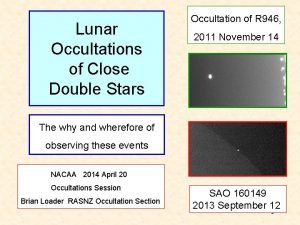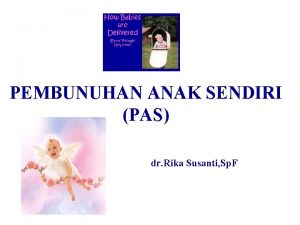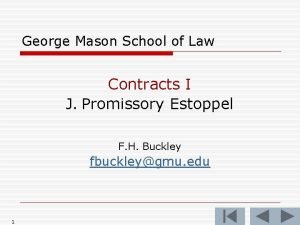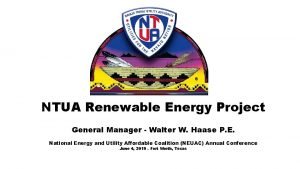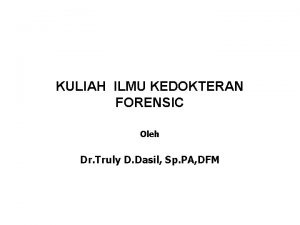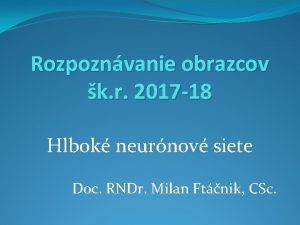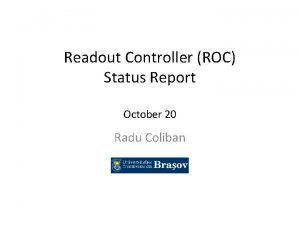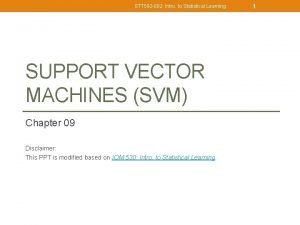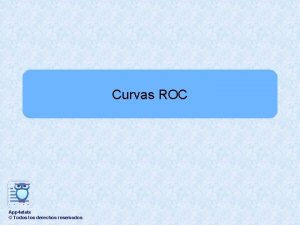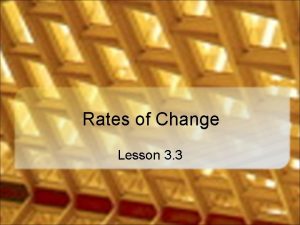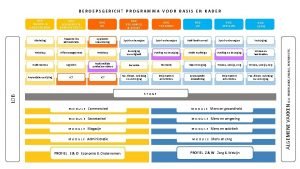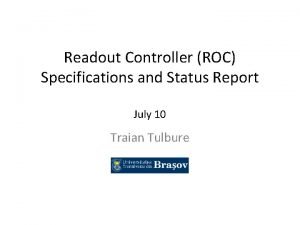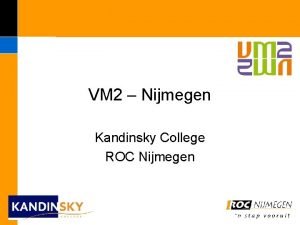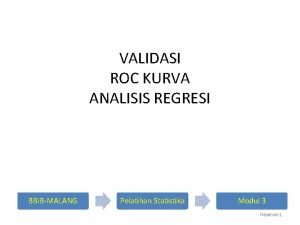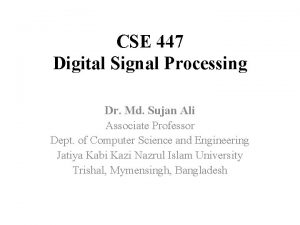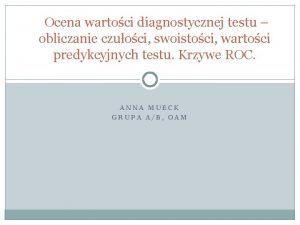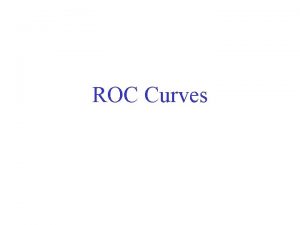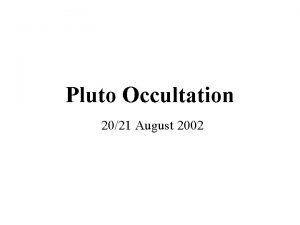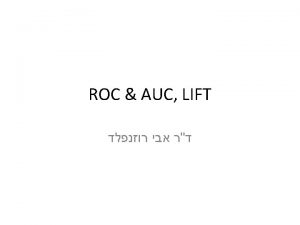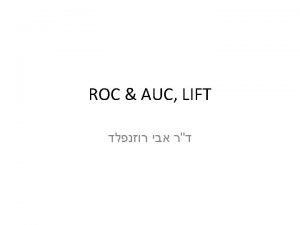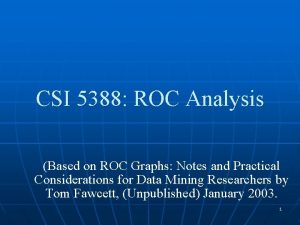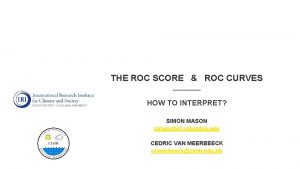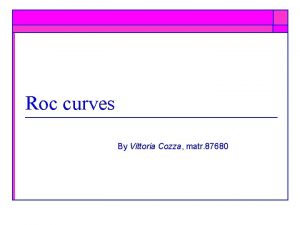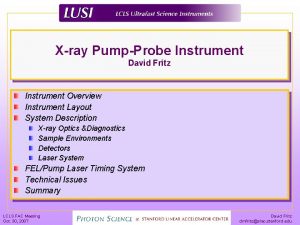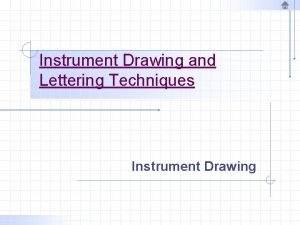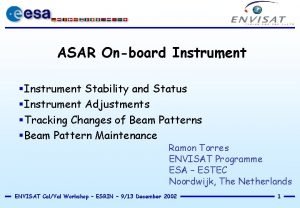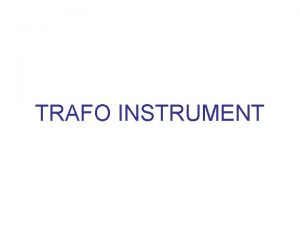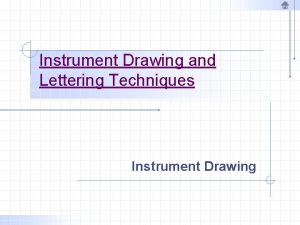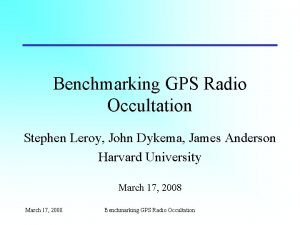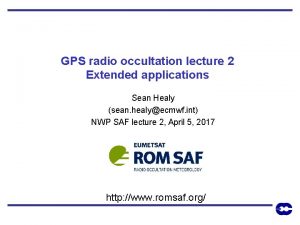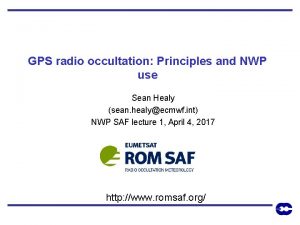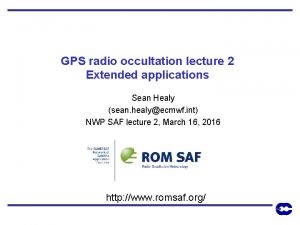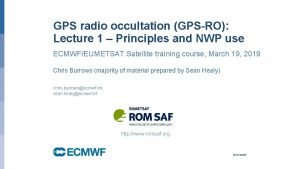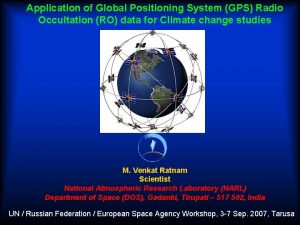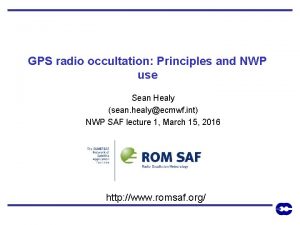Radio Occultation ROC Instrument for Strateole Jennifer Haase





























- Slides: 29

Radio Occultation (ROC) Instrument for Strateole Jennifer Haase and Weixing Zhang Scripps Institution of Oceanography

GPS Radio Occultation Concept GPS satellite at positive elevation Stratospheric balloon Zero elevation Atmospheric refractivity Is retrieved at the indicated tangent points rballoon rearth rtangent ratmo Negative elevation (occultation)

Observation geometry Maximum of 115 occultations per day, 58 of which are setting. Actually transmitted to ground 6. Large tangent drifts ~250 km.

Important Points Data transmission may be limiting factor: 3 Mbytes per day => 6 profiles of 120 possible Accuracy ~ 1% in refractivity ~2 K (still working to improve this) Penetration to the lower atmosphere will be less than for Concordiasi, expect 7 -9 km altitude Upgrades desired: possible 2 way transmission for precise onboard positioning on-board processing for excess phase

PSC 18 and PSC 19 711 occultations total 639 dropsondes total o PSC 18 o PSC 19 o dropsondes

Penetration depth of occultations

Excess Doppler for PRN 25 compared with simulated excess Doppler

Dropsonde/model comparison Refractivity difference between a nearby dropsonde refractivity profile and: retrieved ROC refractivity profile (blue), NCEP refractivity (black), AMPS refractivity (green) or ARPEGE (green)

Improved GPS analysis Corrected phase data for millisecond time offsets New PPP with ambiguity resolution software Uses ground network to resolve corrections (ambiguities) then calculates absolute position Now reanalyzing occultation data

Estimating accuracy of position Inclined GPS antennas for recording high elevation navigation signals and low elevation occultation signals. Relative position of ant 2 relative to ant 1 Difference between absolute position of ant 2 and ant 1 Rms 7 cm horizontal, 20 cm vertical ROC

Complete time series PSC 18 54 days PSC 19 42 days

Gravity wave analysis Case study when balloon passing over Antarctic Peninsula PSC 19 on 2010. 311

Gravity wave analysis Perturbation time series Comparison between PPPAR and CNES solutions (Vincent & Hertzog, 2014) PPAR-based results CNES-based results Fit the trend using 3 -order polynomial 41 points window

Gravity wave analysis Perturbation time series Zoom in PPAR-based results CNES-based results

Gravity wave analysis Perturbation time series Zoom in PPAR-based results CNES-based results

Pressure gradient depends on height accuracy

Pressure gradient depends on height accuracy

Gravity wave analysis Perturbation time series FFT results PPAR-based results 285 sec CNES-based results

Comparison with WRF simulation Domain Two-way nesting Horizontal resolution: 21 km (d 01) and 7 km (d 02) Vertical: 61 levels from the ground to 10 h. Pa Period From: 2010 -11 -06_00: 00 To : 2010 -11 -08_00: 00 Physical scheme Item Microphysics Cumulus Boundary-layer scheme Ferrier (new Eta) Kain-Fritsch (new Eta) scheme Mellor-Yamada-Janjic TKE scheme Surface-layer Land-surface Longwave radiation Shortwave radiation Upper level damping flag Monin-Obukhov (Janjic) scheme Unified Noah land-surface model RRTMG scheme Goddard short wave With diffusive damping

Comparison with WRF simulation The horizontal and vertical wind speed at 17. 4 km height is ~consistent with PPPAR results

Comparison with WRF simulation Cross-section view of potential temperature and wind speed along the balloon trajectory

WRF model / dropsonde comparison Note dropsonde not on the same day Looking for gravity wave characteristics

Next steps in preparation for Strateole Next steps are to raytrace through the atmospheric model perturbed by gravity waves in 2 D to calculate accumulated delay Perform an inversion to see how mapped refractivity represents actual refractivity Estimate probability of recording gravity wave from balloon position simultaneously with temperature profile variations from occultation measurements

Balloon Rotation Study Two receivers (V 181 and V 182) on 2010. 286 Get the baseline solutions using Graf. Nav The baseline azimuth time series (angles vs. north) 3 order polynomial fit 41 points window

Balloon Rotation Study Panel temperature time series on 2010. 286

Refractivity Retrieval

Conclusions • Successful mission – exceeded expectations for a prototype mission • Retrieved 6 -9 profiles per day for each balloon as expected with equally good quality for rising and setting occultations • During the two balloon flights: • a combined total of 107 days, • more than 700 occultations were recorded (number limited by the data transmission rates) • More than 32% of the profiles (227) descended within 4 km of surface • Very good outlook for contributing to the goal of improving atmospheric models in the Antarctic

PSC 18 and PSC 19 flights • Total of 711 occultations with duration greater than 7 minutes of continuous data below the horizon • 639 total dropsondes on 13 balloons

Gravity wave analysis Perturbation time series Zoom in PPAR-based results CNES-based results
 Double occultation
Double occultation Viktor haase
Viktor haase Rumus haase
Rumus haase Uji apung paru positif
Uji apung paru positif Haase v cardoza
Haase v cardoza Ntua general manager
Ntua general manager Rumus haase adalah
Rumus haase adalah What is active and passive instruments
What is active and passive instruments Awin support
Awin support Roc nijmegen energieweg
Roc nijmegen energieweg Roc krivka
Roc krivka Roc
Roc Roc
Roc Roc to stt
Roc to stt Curvas cor
Curvas cor Roc
Roc Average rate of change equation
Average rate of change equation Roc curve data mining
Roc curve data mining Roc van amsterdam airport
Roc van amsterdam airport Roc economie en ondernemen
Roc economie en ondernemen Aventus.sharepoint
Aventus.sharepoint Roc-2015 ro controllers supplier
Roc-2015 ro controllers supplier Roc
Roc Roc nijmegen rooster
Roc nijmegen rooster Roc
Roc Roc
Roc Utwente notebook
Utwente notebook Roc statistik
Roc statistik Dr sujan ali
Dr sujan ali Czułość i swoistość
Czułość i swoistość
